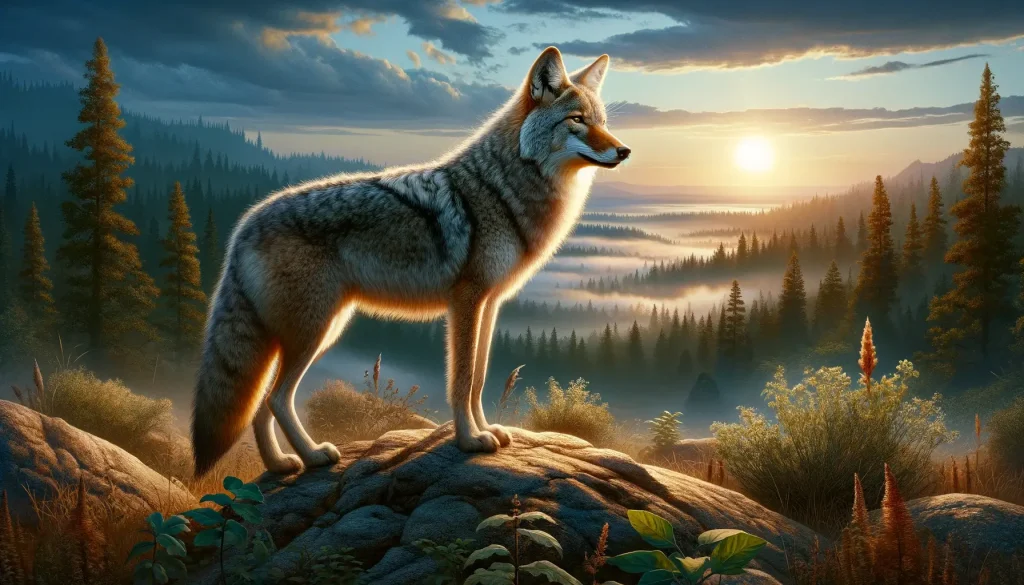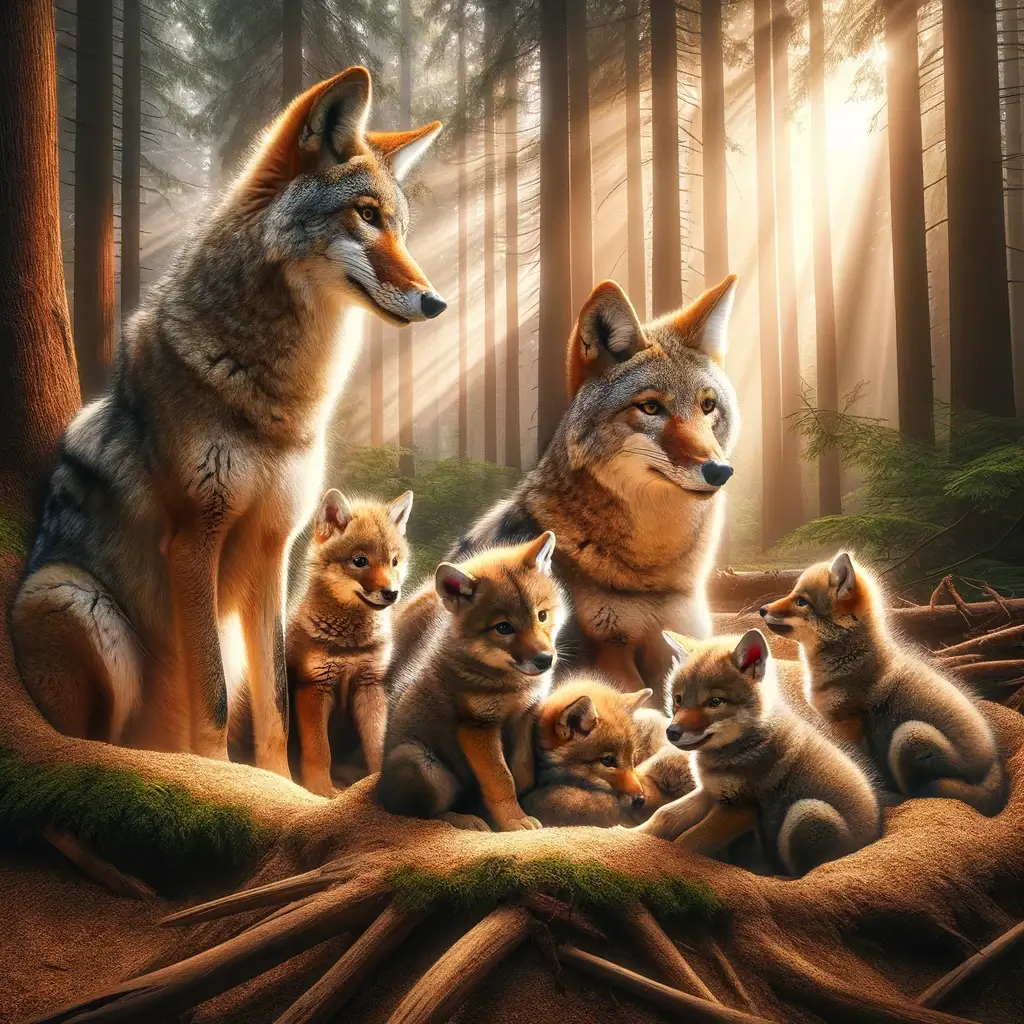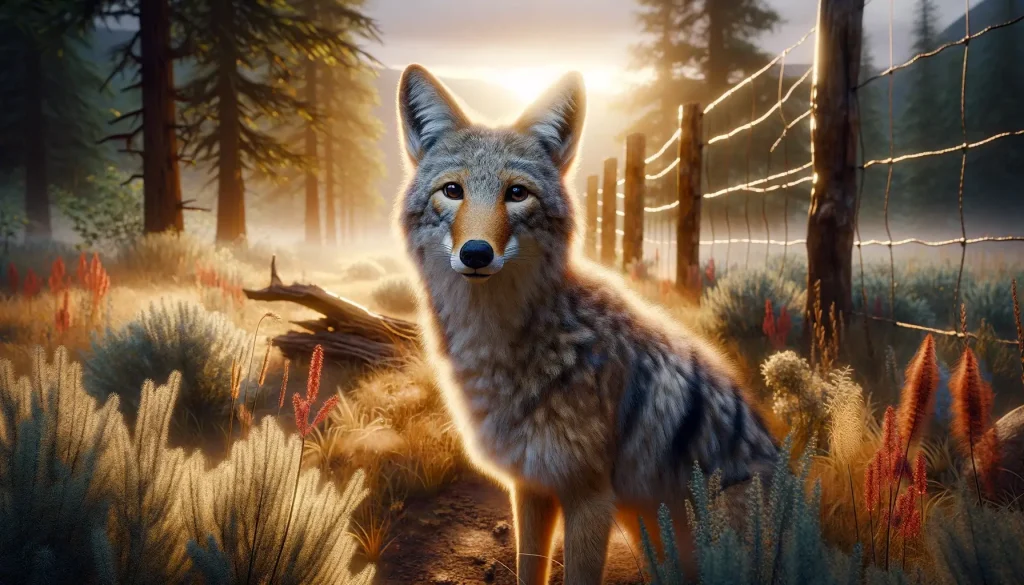
Exotic Pet Care FAQ
When it comes to exotic pets, understanding their needs and the best ways to care for them is essential. Here are some frequently asked questions that will help you get acquainted with the prerequisites of caring for an unusual pet, such as a coyote.
- Is it legal to keep a coyote as a pet?
The legality of keeping a coyote as a pet varies by region. Always check local wildlife regulations and laws before considering a coyote as a pet. - What do coyotes eat?
In the wild, coyotes are omnivores. A diet for a pet coyote should include a balance of meat, fruits, and vegetables to mimic their natural diet as closely as possible. - How much space does a coyote require?
Coyotes are highly active and require ample space to roam and exercise. A large, securely fenced area is necessary to keep a coyote happy and healthy. - Are coyotes dangerous to have around pets?
While every animal has its unique personality, coyotes are wild animals. Supervision and proper socialization are critical when introducing a coyote to other pets. - Can coyotes be trained?
Coyotes are intelligent animals and can be trained to some extent. However, they have a strong independent streak and training requires patience, consistency, and understanding of wild animal behavior. - How long do coyotes live?
In captivity, coyotes can live up to 13-15 years with proper care, significantly longer than in the wild. - Do coyotes make good pets?
Coyotes are not domesticated animals and keeping one as a pet comes with significant challenges. They have complex needs and require a committed, knowledgeable owner.
Living with Coyotes
There’s a lot of misinformation out there about coyotes, especially when it comes to their interaction with humans and domestic pets. Let’s tackle some of these myths and provide accurate information to help build a harmonious coexistence with these fascinating creatures.
- Coyotes and Domestic Pets
One common myth is that coyotes intentionally lure pets away to harm them. This isn’t true. Coyotes are opportunistic predators, but attacks on pets are often a result of them being seen as prey rather than a plotted strategy. Protecting pets involves supervision and secure environments. - Coyotes’ Vocalizations
Coyotes have a range of vocalizations used to communicate within their pack. Their howls, yips, and barks are not celebratory signals following a hunt but rather serve to maintain contact and convey messages among members of their group. - Understanding Coyote Behavior
Clarifying the size and behavior of coyotes helps in understanding them better. Myths exaggerate their size and often misinterpret their mating habits. Despite misconceptions, coyotes play an essential role in maintaining the balance of ecosystems by controlling rodent populations and cleaning up carrion. - Coyotes in Culture
Beyond their ecological value, coyotes hold symbolic significance in various cultures. Seen as tricksters, creators, or bearers of wisdom, they remind us of the importance of adaptability, humor, and the complexity of life.


Coyote Quick Facts
Curiosity around coyotes grows as they increasingly share spaces with humans. Here, you’ll find essential facts answering common queries about these engaging animals.
- What colors are coyotes?
Coyotes’ fur can range from grayish-brown to yellowish-gray on the upper parts, while the throat and belly tend to have a white to cream color. Variations exist, with some coyotes showing more reddish or darker fur. - How fast can a coyote run?
A coyote can run up to 40 miles per hour when in pursuit of prey or when trying to escape a threat. - Do coyotes have territories?
Yes. Coyotes are territorial animals. They mark and defend their territory, which can vary in size based on the availability of food and the density of the coyote population in the area. - Coyote pups’ survival rate
It’s challenging for coyote pups with only an estimated 5% to 20% surviving their first year. Predators, human conflicts, and scarcity of food contribute to this low survival rate. - Role in the ecosystem
Coyotes play a crucial role in maintaining the balance of ecosystems by controlling rodent populations and cleaning carrion. Their adaptability allows them to thrive in a wide range of habitats. - Coyotes and humans
While coyotes naturally avoid human contact, sightings in urban areas have increased. With proper knowledge and coexistence strategies, both coyotes and humans can share spaces safely.
Fur Facts About Coyotes
If you’re considering a coyote as a pet or just curious about these intriguing animals, their fur is a fascinating topic. Coyotes have a distinctive coat that provides camouflage, warmth, and signals about their health and status.
- Seasonal Changes
Coyotes’ fur undergoes seasonal changes. In winter, they sport a thicker, fuller coat that helps keep them warm. As the seasons change to spring and summer, they shed to a lighter coat that helps them stay cool. - Color Variations
The color of a coyote’s fur can range significantly. Typically, they exhibit a grayish-brown to yellowish-gray on their upper parts, but variations can include more reddish or darker fur. This coloration helps them blend into their environment effectively. - Texture and Maintenance
Coyote fur is relatively coarse and requires minimal maintenance in the wild. However, pet coyotes might need occasional brushing to help manage shedding and keep their coat healthy. - Signs of Health
The condition of a coyote’s fur is a good indicator of its overall health. A shiny, thick coat suggests a healthy coyote, while a patchy or dull coat may indicate health issues or nutritional deficiencies.

Coyotes and Family Dynamics
In the realm of exotic pets and wild animals, understanding the social structure and family dynamics of a species is crucial. Coyotes, with their rich social lives, provide a fascinating study in animal behavior and group interaction.
- Pack Structure
Contrary to popular belief, coyotes have a flexible social structure. They can live in packs or as solitary individuals, depending on the environment and food availability. When in packs, there’s a clear hierarchy that helps maintain order and cohesion. - Parenting and Pup Rearing
Coyote parents are highly involved in raising their young. Both the male and female share responsibilities, from hunting for food to teaching survival skills. This dedication ensures that the pups have a fighting chance in the wild, despite the high mortality rate. - Communication is Key
Coyotes use a variety of sounds to communicate with pack members. Howls, yips, and barks serve not only to maintain contact but also to warn others of danger. This communication is crucial for their survival and maintaining the pack’s territory. - Sibling Bonds
Pups learn and grow together, forming strong bonds with their siblings. These relationships are vital for learning social cues and hunting techniques. Even as they grow older, the ties between coyote siblings often remain strong. - Role of the Alpha
In coyote packs, the alpha male and female lead the group. They make decisions about hunting, territory, and pack disputes. Their leadership is essential for the pack’s success and the well-being of its members.
Beginner Guide to Raising Quail at Home
What are the Signs of a Dog Concussion?
What Causes Your Dog’s Ears to Smell Bad?
When your dog’s ears start to emit an unpleasant odor, it might leave you puzzled…
Methimazole Treatment for Cat Hyperthyroidism
Methimazole plays a crucial role in managing feline hyperthyroidism, a condition marked by an overactive…
Got Hummingbirds in your Backyard? Here’s How to Care for Them.
Why Does Your Cat Pee Outside the Litter Box?
Cat’s Litter Box Issues It’s not uncommon for cat owners to face the frustrating dilemma…




